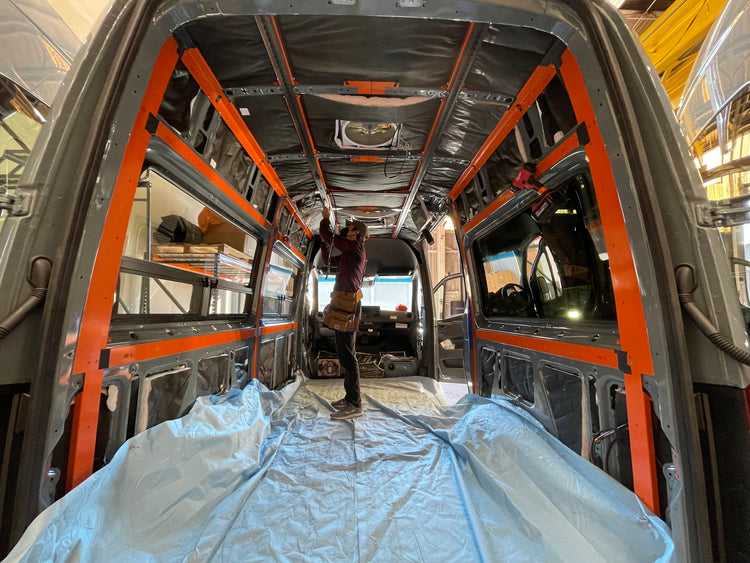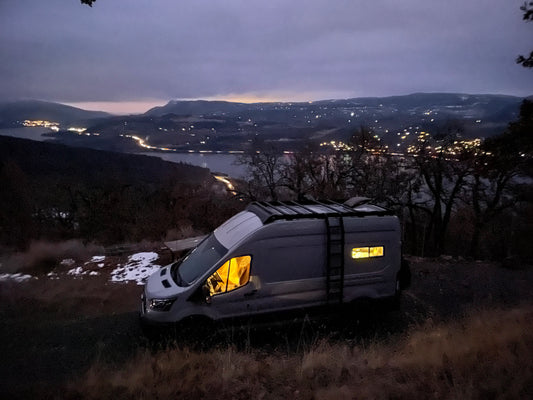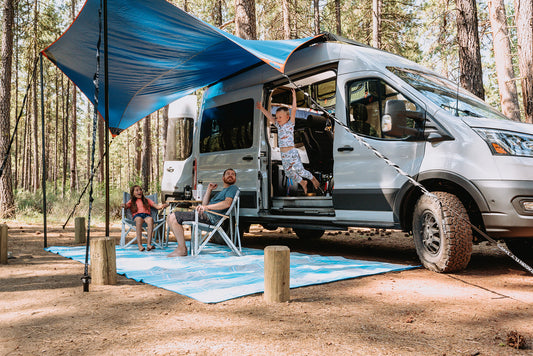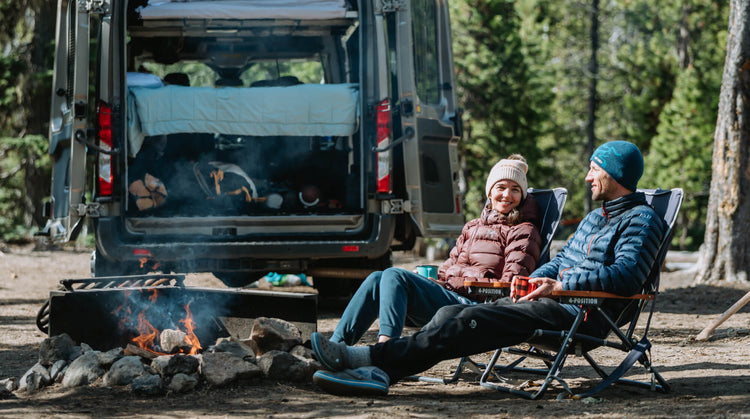The foundation and frame are the most crucial part of any van build – a baseline that dictates the strength, fit, and general integrity of the finished product. When building out the structure of a van conversion, there are a few important things to consider. Below is a breakdown of those key factors, and how the Adventure Wagon A-Frame stacks up to using wooden furring strips to frame your van.
Strength
When it comes to strength, there are some important questions to ask before starting your frame: Will the material be strong enough to hold a bed (or two), and can you safely store items in cabinets attached to the walls to maximize space? Will you be able to strap items to the walls and ceiling if you need to? Will a heavy kitchen galley be safe if secured to the wall?
Our A-frame is made of powder-coated steel and is riveted into the frame of the van, reinforcing the metal in the van for excellent pull-out strength. The L-track then bolts straight into the rivet nuts (rivnuts) to create our signature versatility. On the ceiling, two “speed strut” ceiling bracers run front to back through the van, attaching at several points along the cross ribs. This allows you to run reinforced L-track down the entire length of the van, as opposed to just a handful of places where the ribs run across. The benefit is more attachment points for all the things you want to hang. Multiple beds? Overhead storage? Hammock from the ceiling? No problem.

Ceiling bracers, which are part of the A-Frame, run front to back and and adds strength that allows for more attachment points for storage solutions, hammocks, or anything else.
Noise and durability
Noise while driving is something that many first-time van conversion builders or buyers don’t consider. Taking your van down gravel roads to your favorite camp spot may not seem like a big deal to you, but it’s a seismic event for your camper van. Things can shift and loosen. This, coupled with the shrinking and swelling of a wooden frame as moisture and temperature in your van fluctuate, can lead to some unsavory sounds coming from the walls of your van. Another thing to consider is that wood is a natural material that’s susceptible to rot and infestation over the years.
With its signature ultra-durable orange powder coating, the A-frame won’t rust, and of course, will not swell or rot. It’s also fastened to the van via rivets that don’t loosen over time. These factors virtually eliminate squeaking and rattling and ensure the structural integrity of your van for the long haul.

Wood framing such as the furring strips shown above will swell with moisture and temperature fluctuations, which can lead to squeaks, creaks and rattles. Photo from Far Out Ride.
Install time
Measuring and cutting your van frame can be incredibly time consuming. The stakes are high considering your entire build will be attached to your frame in some way, whether directly or through another component. You also need to identify where to best attach the frame to the van to maximize strength and structural integrity.
The A-frame comes pre-sized and labeled, with indexed connection points for accurate placement. No cutting, no measuring, no worrying about how to maximize the strength of the structure. Countless hours of engineering went into making sure the A-Frame fits every contour of the van. Manufacturing discrepancies from van to van have been accounted for - no modifications are necessary.

The A-Frame has indexed connection points for easy and accurate placement
Bulk and weight
Many DIY camper vans use wood to build the frame out. Wood can be a strong material if the correct type is used, but it has a bulky profile that takes up precious space in your van.
The ideal material for framing a van is low-profile, lightweight, and durable. Steel is strong enough that it can be relatively thin, which can save several inches of space inside your van. And if you've ever spent time in a van before, you know that every inch counts! Because it’s thin, it has an incredible strength to weight ratio that far exceeds traditional wooden framing such as furring strips.
Attachment method
How will you attach the framing material to your van? The usual suspects are screws, glues, and rivets. One key consideration is to make sure you’re minimizing the risk of corrosion given the propensity of moisture in your van. Screwing straight through a furring strip and into your van can be a recipe for rust. Any hole in your van should be treated with a rust preventative, which is difficult to do in the case of self-tapping screws. Screws also have the tendency to back out over time with all the jostling that can go on in a van. Construction grade adhesive is another option, but keep in mind that it's generally very permanent, making removal for repair or changes difficult. It also can be toxic, so always be sure that the adhesive you’re using is safe for use indoors.
The A-Frame is secured using rivets and rivet nuts (rivnuts), which make an incredibly strong connection point that won’t loosen or back out. They also pave the way for easily attaching the L-track, which is bolted in via the rivnuts. Rivets require pre-drilled holes, which give you the opportunity to apply rust preventative before riveting. When using them in large quantities, it’s advisable to buy or rent a pneumatic rivet gun to make the job go faster.

Rivet nuts are used to attach the A-Frame to the van body, which then accept bolts that secure the L-track to the wall of the van.
Overall, the A-frame is a solution that is super strong, low profile, highly rust resistant, and impervious to temperature and moisture fluctuation. When you also consider that there's no cutting or measuring involved, the A-frame is an incredibly complete and efficient solution to framing your van.




